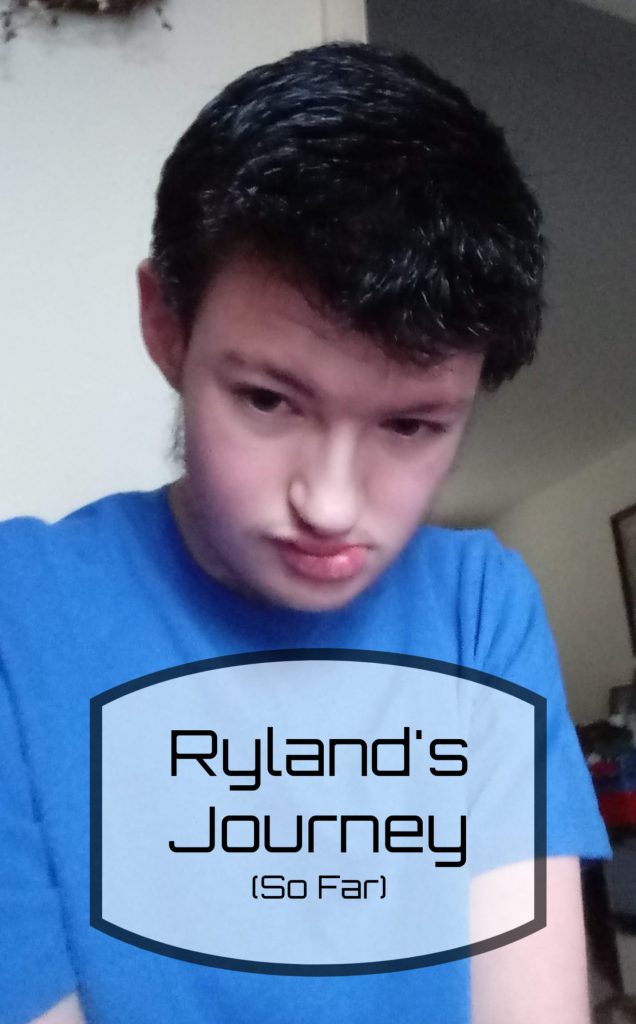
Even in the special needs’ community, Ry is special. He doesn’t usually fit into any of the molds – he doesn’t act like most of his peers. He’s been an individual since he was born. It’s been a long, exciting and sometimes frustrating journey with him, and it still isn’t over. We’ve only just begun the next phase of his life.
As you probably know if you’ve visited the Meet the Family page, Aidan and Ryland are twins. They were born via c-section with Ry coming out just a few minutes after Aidan. We should have known right away that he was special. They were big for twins; Ry at 7lbs and Aidan at 8lbs. Aidan came out screaming, eyes shut tight, but Ry came out with his eyes wide open and very quiet for a newborn. He did cry initially, like they all do, and had a very good APGAR score, but while being cleaned up he calmed down and those eyes were open. Our first clue that something may be wrong was when I tried breast feeding. Ry couldn’t latch on due to low muscle tone. The low muscle tone also contributed to him having some serious constipation issues.
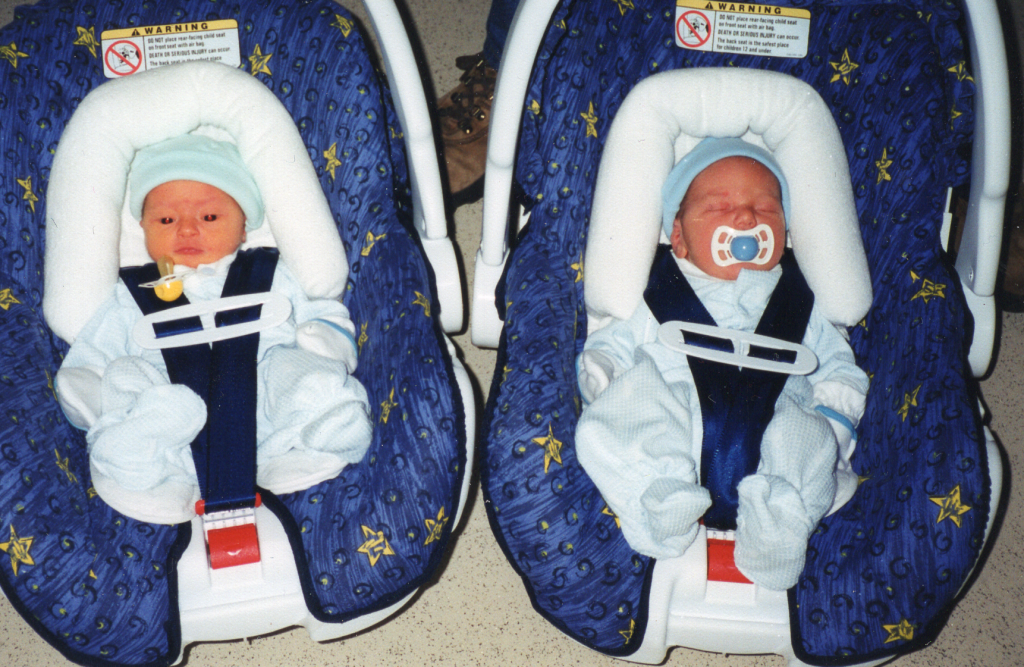
Babies are supposed to sleep. Eat, poop and sleep – that’s the natural order of it. Ry would not sleep. He would be up for hours, take a very small nap and then be awake again with his eyes wide open. Because they were twins, I had done tons of research on what to expect. One of the tips to help with sleeping at night was to let them lie close together as they did in the womb. Well that didn’t work out too well for us – none of the normal twin tips did. Ry would start kicking – because he wouldn’t sleep – and kept waking Aidan up, which in turn pissed Aidan off so he would start crying. Then Ry would start crying because Aidan was crying. It was a nightmare! We tried separating them, but Ry would still make so much noise cooing and kicking that Aidan couldn’t sleep well. We finally started taking shifts with them. Holding Ry would calm him enough that Aidan could sleep. I would take the first shift – usually to 1 or 2am, then Eric would take care of them until he had to go to work a few hours later. It was a mind-numbing arrangement.
It was only a month or so after they were born that real red flags started to go up. Ryland was not growing like he was supposed to. He was diagnosed as microcephalic – when the baby’s head circumference is smaller than normal. We knew then that we would have a road to travel with Ry but didn’t know at that point exactly what to expect.
My husband, Eric, was in the military when the boys were born, but separated from active duty when they were only three months old. We moved to Colorado to be closer to his family. It was horrible timing as far as medical care for the boys, but we did what we could. A few months after the move we had health insurance again and the boys were seen for their regular physicals. Ry was still in the very low percentile on the growth chart. We started trying to find answers. Thus began the stream of specialists that would come into our lives over the next several years. However, no one could tell us why he was not developing like his brother. Aidan was hitting all the regular milestones, but Ry was behind. For example, Ry started crawling when Aidan was learning to walk. It was heartbreaking.
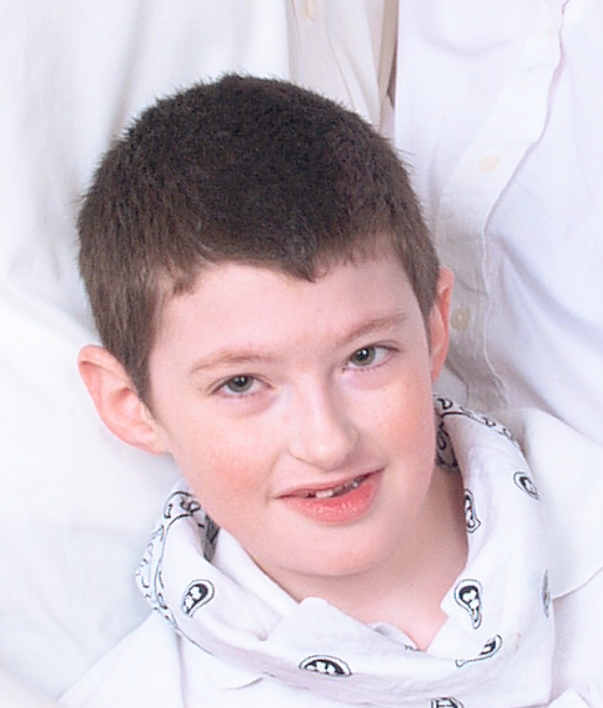
One doctor suggested that he may have had a stroke while still in the womb but after an MRI, that was ruled out. No signs of a stroke. Another doctor said it may be Cerebral Palsy but would not definitively give that diagnosis because Ry didn’t quite fit the criteria. Our biggest shock came when Eric and I went to his first neurologist. After giving a short physical examination, he bluntly stated that Ry would be a vegetable his entire life, that he would never walk or communicate and that we should go ahead and start looking for a facility to take care of him. We were floored – the wind knocked out of us both. I think that was the hardest day we’ve ever gone through concerning his medical care. After getting over the initial shock, we agreed that we wouldn’t pay attention to that particular doctor’s advice. Ry was our son and we would never hand him off to someone else – we didn’t care how challenged he was. We also decided to get another neurologist.
A couple of years went by, and Ry continued to grow at a slower rate than his brother, but he was growing. He still was not sleeping normally. He had no set pattern and often stayed awake for stretches over 24 hours before taking a short nap and then be back to his happy, energetic self. He refused to eat solid food that wasn’t crackers or breaded so we were told to give him whole milk with Carnation Instant Breakfast in it to make sure he was getting all the vitamins and minerals he needed. Failure to Thrive became the catch phrase when talking about his medical condition – which basically means nothing as far as a diagnosis is concerned. We were seeing every type -ologist there is, and no one had any answers.
Ry was 2 years old when he started acting like he wanted to walk. It was then that I noticed that his ankles were not strong enough to hold his weight. They would buckle every time he tried to take a step. We went to a physical therapist who demonstrated what she called hypermobility – she turned his foot to a 90-degree angle from his knee! I nearly fainted. She recommended braces for his ankles to help build up the muscles in his ankles and legs. Within two weeks of having those braces, our boy was walking. Take that heartless neurologist who said he’d never walk! Finally, we felt as though we were making progress with him. As short lived as the feeling was, we savored the victory.
Not long after Ry started walking, Eric rejoined the military and was stationed closer to my parents in the south. We began anew with the long list of doctors. This time though, through the military, we had a developmental pediatrician who helped us navigate Ry’s medical and mental health journey. I was hopeful we’d finally get answers. There were weekly trips to see geneticists, neurologists, even dermatologists as some physical clue may unlock the mystery. My hopes soon faded.
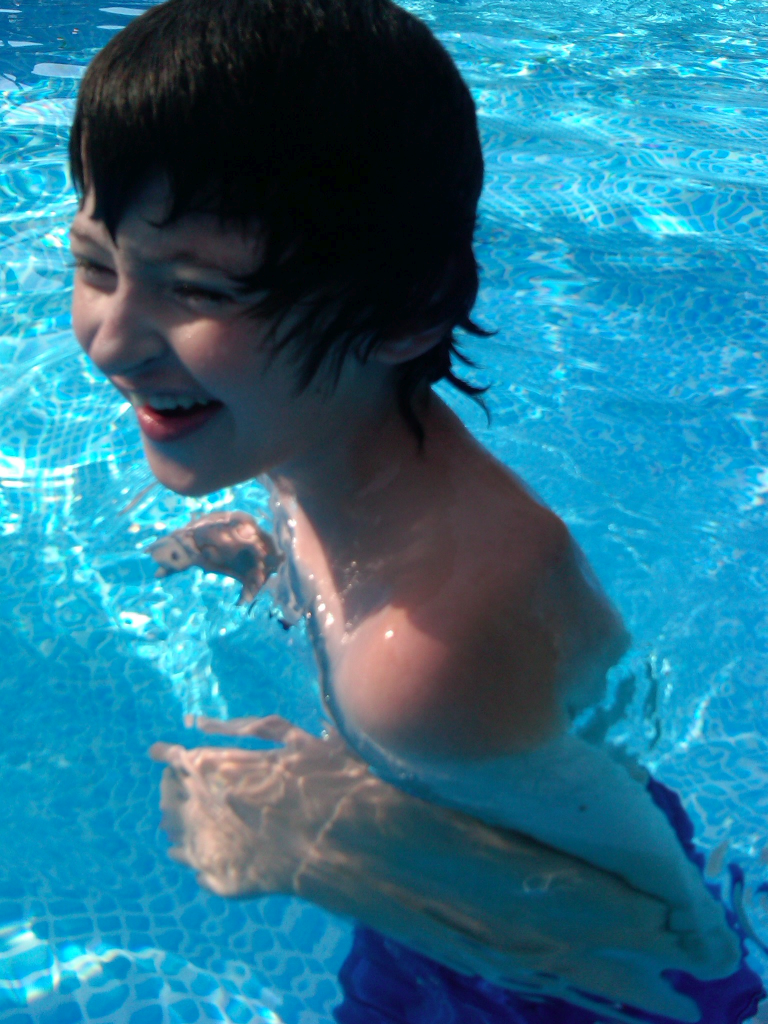
I had been doing my own research as to what may be going on with Ryland and came up with Angelman Syndrome. He had 90% the clinical markers they knew of at the time: lack of sleep pattern, microcephaly, fascination with water (if there was water nearby, that boy was in it), generalized happy demeanor (Ry never cried and rarely threw a fit of any kind – he was usually laughing), language delay (he was and is non-verbal), the list goes on. I finally convinced the geneticist to test for it. It came back negative. I kept up with the research and every time a new type of genetic test was available, I’d request it for Ry. They all came back negative. But even the geneticist said at one point that if it weren’t for the negative test results, he would diagnose him with Angelman. I was convinced this was the answer, regardless of what the testing said. Even though it wasn’t official, I made sure that his medical records mentioned Angelman Syndrome as a possible diagnosis. Had I not been so focused on this particular verdict there may have been room for other answers – like autism. I could still kick myself for that.
It was during this time that Ry started school in pre-K classes designed for special needs students. I would volunteer in his classes from time to time and it was then that I started noticing just how different he was from other special needs kids. Where most of them were able to sit for at least short amounts of time, Ry was in constant motion. He was even known to escape classrooms if not watched every second. He couldn’t focus on any tasks for very long. But all of his teachers loved him, and special liberties were given to him because of his need to keep moving.
I also learned that no other children in his peer group at the time had the sleep issues he did. I never thought that it was normal of all special needs children, but I had thought that it was more prevalent than it apparently is. I’ve since learned that sleep disorders are very common in kids with autism, but even by autistic standards he still took it to the extreme. By this time his sleep was even more skewed, and he would stay up for periods of 30-36 hours before napping. We tried sleep medications, but the side effects for him were awful. Even melatonin didn’t really help – it never put him in a deep enough sleep that would last more than an hour or two. I was getting tired – mentally and physically – taking care of him and trying to find a diagnosis.
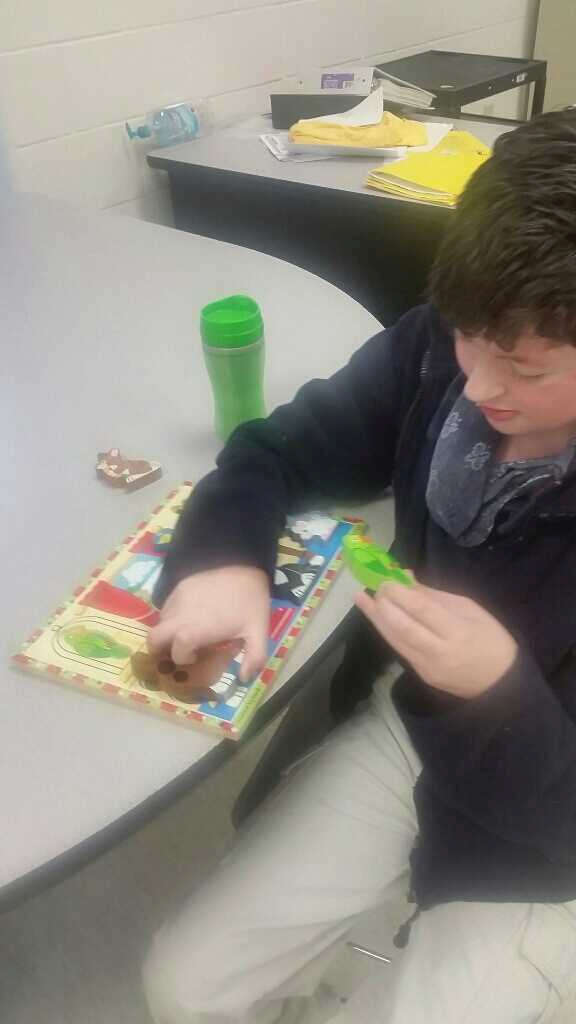
After years of being poked and prodded trying to find answers, we finally resigned ourselves to the fact that we may never get a diagnosis. We made peace with that. I quit pushing and we took a break from all the -ologists. By this time, we were here in North Carolina. Access to care for Ry was limited anyway. It wasn’t like where we had come from – where all the specialists were easy to get referrals for and easy to see. So, I concentrated more on his education.
We got him moved into an AU (autism) classroom instead of the ID-Moderate classrooms he had been in. He thrived! He was finally sitting a little and paying attention. He was getting speech therapy through the school and doing well with PECS (Picture Exchange Communication System). We had hope that he would soon be able to communicate with us beyond the pulls and grunts. He didn’t run out of classrooms anymore and he was actually interacting with his peers.
Then he hit middle school. Middle school is much different from elementary school – we all know this is true for typical children. It is no different for those with special needs. Even though Ry was still in an AU setting, it quickly became obvious that he was not on the same level as the other students. He started moving around more. He wouldn’t sit and attend to tasks like he had before. He wouldn’t do the work the teacher wanted him to do the way she wanted him to do it. He was different again and stood out, but this time the teachers wouldn’t accommodate him so easily.
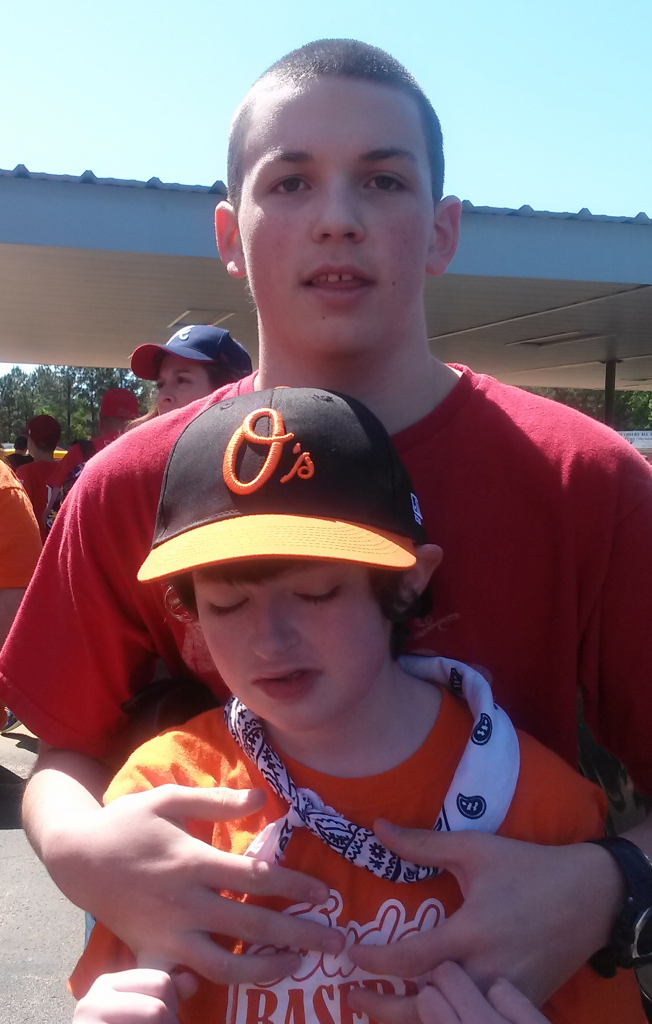
During this time, I was going through my own personal hell mentally, so I was not the advocate Ry needed me to be. (I still feel guilt over it.) The school placed him in an ID – Severe classroom and took away his in-school speech and occupational therapies. He was now in a classroom where he was the only one able to walk. He was in the classroom with the kids who had serious illnesses that needed medical care from nurses that were assigned to the classroom. He didn’t fit in there either.
When he started high school, we were excited to see that one of his AU teachers from elementary school would once again be his teacher only this time in the ID – Severe setting. (She was close to retirement and was slowing down so to speak.) She was appalled by how much he had regressed since she had been his teacher last. We made a pact to get Ry back into the AU setting.
While we were working on his education, I once again started pushing for some sort of medical diagnosis. Fortunately, our Primary Care Physician (PCM) is fantastic and jumped right on board to help. Our main concern was that he was nearly 18 years old. At this age, most resources for those with special needs stop without a diagnosis. Because he had fit in so well in the AU classrooms when he was younger, we looked at autism. Autism had been mentioned during the time of all the -ologists but had been dismissed as a diagnosis for some reason. Our PCM sent Ry to a prominent pediatric psychologist in the area who finally, finally, finally gave us a diagnosis of autism. Although, he did note that there were some other issues going on.
 Now that Ry has the autism diagnosis, he has been able to start speech therapy outside the school system and ABA (Applied Behavior Analysis) therapy. He was in occupational therapy, but the therapist moved, and we are in the process of getting another one. All of this just because of a diagnosis. I can’t help but think sometimes where Ry would be developmentally if we had started all this years ago. I don’t linger there too long though – it would drive me crazy to really think about it.
Now that Ry has the autism diagnosis, he has been able to start speech therapy outside the school system and ABA (Applied Behavior Analysis) therapy. He was in occupational therapy, but the therapist moved, and we are in the process of getting another one. All of this just because of a diagnosis. I can’t help but think sometimes where Ry would be developmentally if we had started all this years ago. I don’t linger there too long though – it would drive me crazy to really think about it.
The diagnosis also persuaded the school system into putting Ry back into the AU setting. This is his first year back and already he is standing out again as being more severe than his peers. But this time it feels as though the teacher is on our side instead of against us.
That’s where we are now. Ry still has the sleep issues although he will sleep for longer stretches when he does sleep. He can still be in constant motion but is getting better at waiting patiently when we need him to thanks to ABA therapy. If you’ve read any of my other posts about him, you know that he doesn’t like clothing. While that, too, is getting better, it is still an issue. Ry is still very much one of a kind. As we look ahead into his adult years, I know there will be more that we will have to learn and overcome, but right now he is happy and healthy and that’s all we can ask for.
